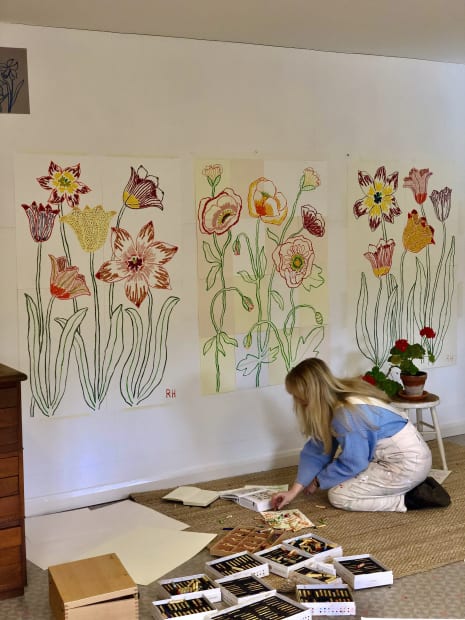The second edition of SPOTLIGHT, our new quarterly online series, features the latest work of four gallery artists, including: Jeremy Annear, with two abstract compositions from his most recent series; figurative sculptures by Arabella Brooke; the floral motifs of Rosie Harbottle; and Beatrice Hasell-McCosh's abstracted canvases inspired by British gardens and the natural world. Each artist presents two works made especially for the series, accompanied by studio interviews that delve into their unique practices.
Explore their new work and find out more about the artists in their own words below.
-
JEREMY ANNEAR
-

Jeremy Annear in his studio, 2024. © The Artist.
-
ARABELLA BROOKE
-
 Arabella Brooke in her studio, 2023. © The Artist.
Arabella Brooke in her studio, 2023. © The Artist. -
ROSIE HARBOTTLE
-
 Rosie Harbottle in her studio, 2024. © The Artist.
Rosie Harbottle in her studio, 2024. © The Artist. -
BEATRICE HASELL-MCCOSH
-
 Beatrice Hasell-McCosh in her studio. © The Artist.
Beatrice Hasell-McCosh in her studio. © The Artist. -
SPOTLIGHT: EDITION ONE
VIEW HERE
DECEMBER 2023











